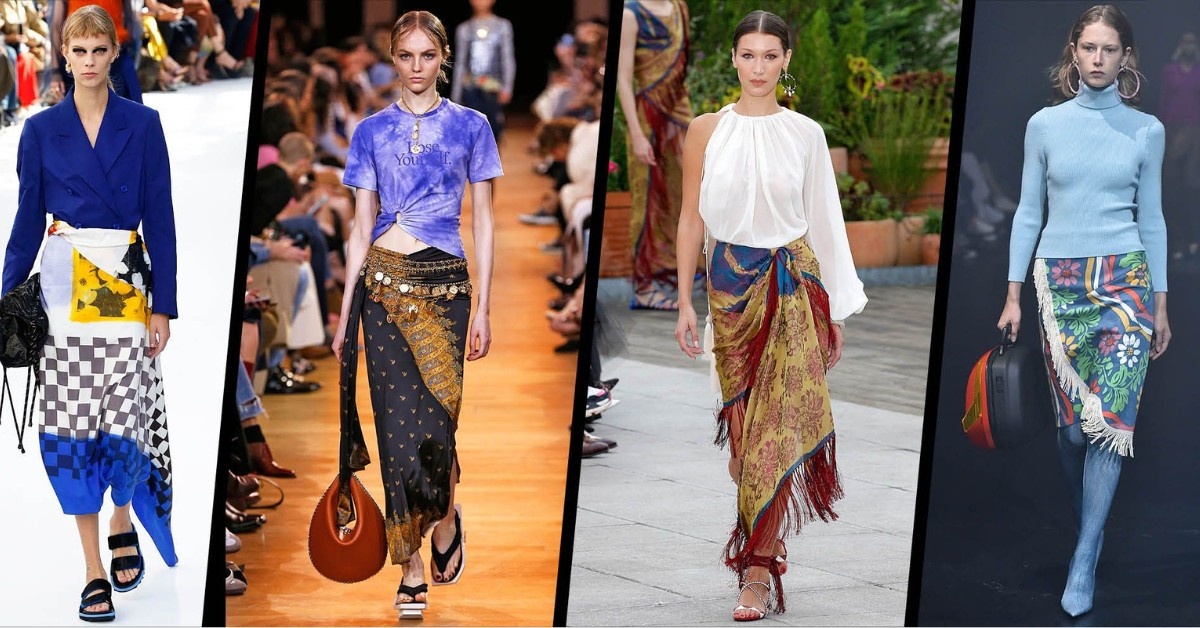The sarong, a garment with roots deeply embedded in various cultures around the world, is a versatile and stylish piece of clothing that has stood the test of time. From its humble beginnings as a traditional attire worn in Southeast Asia to its widespread popularity as beachwear and casual wear globally, the sarong has undergone a fascinating evolution. In this article, we will delve into the history, cultural significance, and modern-day relevance of the sarong, exploring its diverse uses and enduring appeal.
The Origins of the Sarong
The sarong traces its origins back to Southeast Asia, where it has been worn for centuries by both men and women across different cultures. In Indonesia, Malaysia, and the Philippines, the sarong is known by various names such as “sarung” or “sarong” in Indonesia, “pareo” in Malaysia, and “malong” in the Philippines. It is typically made from a length of fabric, often batik or ikat, which is wrapped around the body and tied at the waist.
Historically, the sarong served as everyday attire for people in these regions, providing a comfortable and practical clothing option in hot and humid climates. It was worn for work, ceremonies, and social gatherings, reflecting the cultural values and traditions of the communities that embraced it.
Cultural Significance of the Sarong
Beyond its practicality, the sarong holds deep cultural significance in many societies. In Indonesia, for example, the sarong is not only a symbol of traditional dress but also carries religious and spiritual significance. In Bali, sarongs are worn during religious ceremonies and temple visits as a mark of respect and devotion. Similarly, in Malaysia and the Philippines, the sarong is associated with cultural identity and heritage, often adorned with intricate patterns and motifs that reflect the local customs and beliefs.
The versatility of the sarong extends beyond its cultural and religious significance. It is also a symbol of unity and solidarity, with communities coming together to create and celebrate this timeless garment. The process of making a sarong, from dyeing the fabric to weaving intricate designs, is often a communal effort involving skilled artisans and craftsmen.
Evolution of the Sarong
Over time, the sarong has transcended its traditional roots and evolved into a fashion staple with global appeal. Its lightweight and breathable fabric make it ideal for warm weather, leading to its popularity as beachwear in tropical destinations around the world. Whether lounging by the pool or strolling along the shoreline, the sarong offers both style and comfort, with endless ways to wear it.
In addition to its beachwear status, the sarong has also made its mark in the world of high fashion. Designers have reimagined the sarong in various fabrics, colors, and patterns, incorporating it into their collections and runway shows. From flowing silk sarongs adorned with intricate embroidery to modern interpretations in bold prints and geometric designs, the sarong continues to captivate fashion enthusiasts with its versatility and elegance.
Practical Uses of the Sarong
Beyond its cultural and fashion appeal, the sarong is prized for its practicality and versatility. In addition to being worn as a garment, it can also be used in a variety of ways, making it a must-have accessory for travelers and adventurers alike. Some of the practical uses of the sarong include:
Beach Towel: The sarong can double as a beach towel, providing a comfortable and stylish way to lounge on the sand.
Picnic Blanket: Spread out the sarong for a cozy picnic in the park or countryside, offering a clean and comfortable surface to sit on.
Scarf or Shawl: When the weather turns cooler, drape the sarong around your shoulders as a scarf or shawl, adding a touch of warmth and style to your outfit.
Head Covering: In hot and sunny climates, the sarong can be wrapped around the head as a makeshift turban or headscarf, providing protection from the sun’s rays.
Baby Carrier: For parents on the go, the sarong can be used as a makeshift baby carrier, allowing you to keep your hands free while keeping your little one close.
Wall Hanging or Tapestry: Adorn your walls with the vibrant colors and intricate patterns of a saron’g, adding a touch of exotic flair to your home decor.
Tablecloth or Table Runner: Dress up your dining table with a saron’g as a tablecloth or table runner, infusing your meals with a touch of tropical charm.
The versatility of the saron’g knows no bounds, making it a practical and stylish addition to any wardrobe or travel kit.
Modern-Day Relevance and Global Appeal
In today’s fast-paced world, the saron’g continues to hold sway as a timeless garment with global appeal. Its versatility, comfort, and cultural significance make it a popular choice for people of all ages and backgrounds. Whether worn as beachwear, casual wear, or as part of a formal ensemble, the saron’g exudes effortless style and elegance.
Furthermore, the rise of sustainable and ethical fashion has renewed interest in traditional garments like the saron’g. With its emphasis on natural fibers, handcrafted techniques, and timeless designs, the saron’g aligns perfectly with the values of eco-conscious consumers seeking alternatives to fast fashion.
Conclusion
Saron’g stands as a testament to the enduring appeal of traditional clothing in a modern world. From its humble beginnings in Southeast Asia to its global popularity as a fashion staple, the saron’g continues to captivate and inspire people around the world. Whether worn for cultural ceremonies, beach vacations, or everyday wear, the saron’g embodies the spirit of tradition, versatility, and style.
As we celebrate the rich history and cultural significance of the saron’g, let us also embrace its timeless beauty and embrace the diversity of global fashion. Whether wrapped around the waist, draped over the shoulders, or used in creative ways, the saron’g remains a symbol of elegance, sophistication, and cultural heritage for generations to come.







